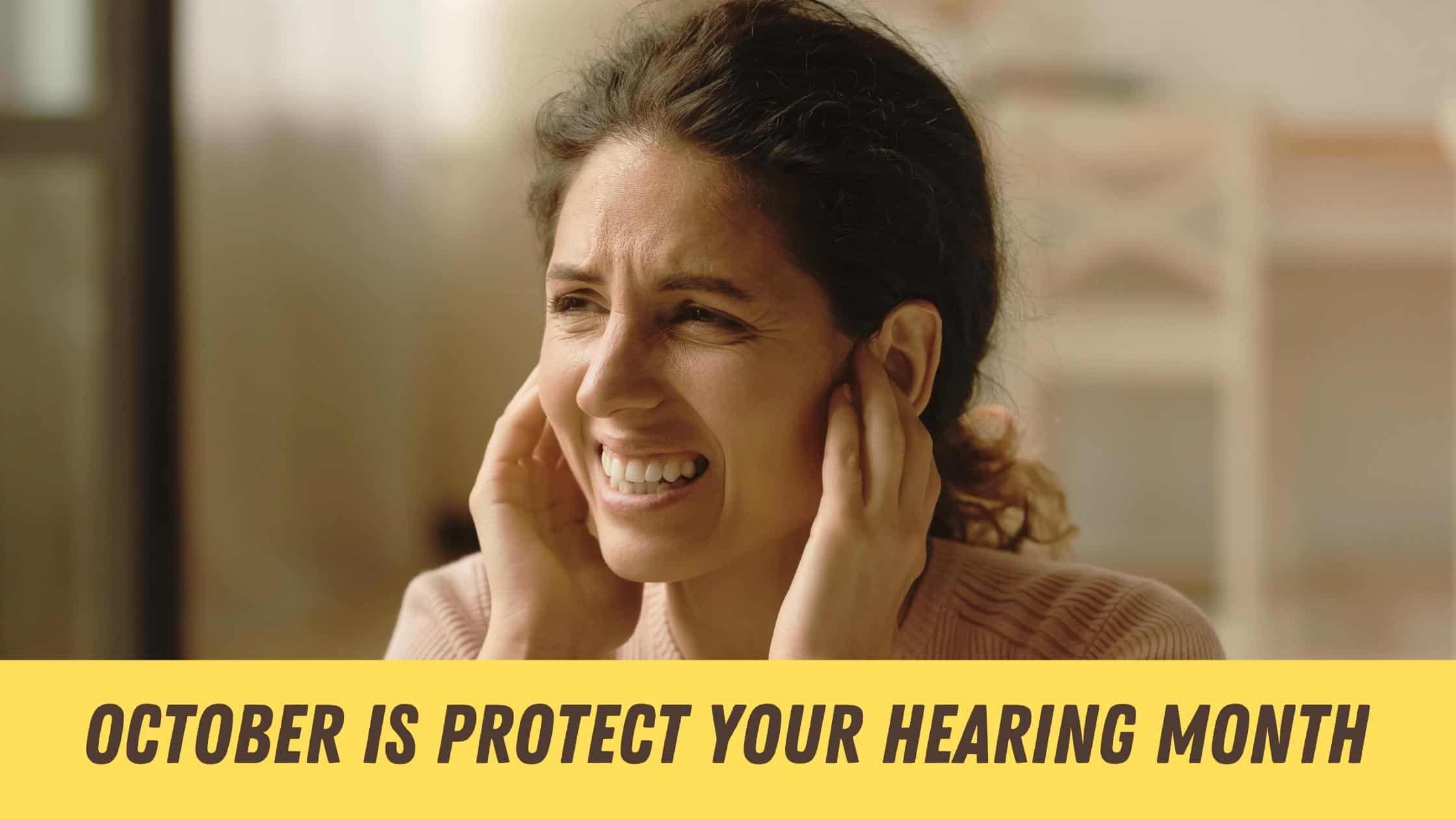
October is National Protect Your Hearing Month. There are a number of causes of hearing loss – and some of them are preventable. Approximately 50 million Americans have hearing loss, but a few simple steps prevent hearing loss for millions of people. Here’s how you can protect your hearing health.
What Causes Hearing Loss?
There are two main causes of hearing loss: conductive hearing loss and sensorineural hearing loss.
- Conductive hearing loss refers to hearing loss that starts in your middle or outer ear. An ear infection, a build-up of earwax, or a bony growth in the middle ear can all cause conductive hearing loss.
- Sensorineural hearing loss is the most common kind of hearing loss. It starts in the inner ear. The cells in the inner ear are very sensitive and can be damaged quite easily. For example, a head injury, and illness, or even certain medications can damage the inner ear.
Two of the most common causes of sensorineural hearing loss are aging and noise exposure.
Dangerous Decibels
Age-related hearing loss isn’t preventable, but noise-induced hearing loss is. Noise-induced hearing loss is common among people of all ages. Loud noise can easily damage the delicate cells in the inner ear, causing permanent hearing loss.
The volume of a sound is measured in decibels. The higher the decibel level, the louder the sound. Let’s take a moment to review decibel (dB) levels of everyday sounds:
- Whispered conversation – 30 to 40 dB
- Normal conversation – 60 dB
- Dishwasher – 60 dB
- City traffic during rush hour – 85 dB
- Lawnmower – 80 to 90 dB
- Motorcycle – 90 to 95 dB
- A personal listening device at full volume – 100 to 110 dB
- Attending a music concert or sports event – 105 to 115 dB
- Emergency sirens – 120 dB
- Firearms or fireworks – 140 dB
Any sounds above 85 dB can damage your hearing. Sounds around 85 dB won’t cause hearing loss right away, but they can still damage the cells in your ears. Meanwhile, sounds over 105 dB can cause hearing loss in just a few minutes.
Talk to Your Teens About Hearing Loss
Were you surprised to see personal listening devices on the list? Our devices can produce surprisingly loud sounds that hurt our ears in a matter of minutes. Listening to music with headphones or earbuds directs extremely loud noise right into the ear canals and increases the risk of hearing loss.
This October, take the time to talk to your children and teens about hearing loss. Teaching safe listening practices can prevent hearing loss!
Here are some tips for safe listening:
- Never turn up the volume higher than 60%. Even if there is annoying background noise, don’t turn up the volume! As a parent, you can even consider putting a parental block on the volume, so your child can’t turn up the volume too high.
- Take a break. It’s always a good idea to disconnect. This is true for your ears as well. Experts suggest that you take a break every 60 minutes. Turn off your music, take out your earbuds, and give your ears a rest.
Protecting Your Hearing
You can’t always avoid noise. But you can protect your hearing. When you’re surrounded by noise, pop in a pair of earplugs. Take a couple of minutes to learn how to insert them correctly so that you can protect your ears.
If you’re exposed to very loud noise, earmuffs provide additional protection. This is great if you’re working in a loud environment and need comfortable hearing protection for the whole day.
When Was Your Last Hearing Test?
Most children, teens, and adults rarely get their hearing tested. One of the best ways to prevent hearing loss is through regular hearing testing. This is especially true if you work in a noisy profession. Construction workers, farmers, musicians, bartenders, air traffic controllers, and law enforcement officers are just some of the professionals who should get their hearing tested every one to two years.
Monitor your hearing health with regular hearing tests. You’ll know the moment your hearing changes and you’ll be ready to treat your hearing loss. We’ve got you covered with a huge selection of hearing aids to suit every age, hearing need, and lifestyle.
